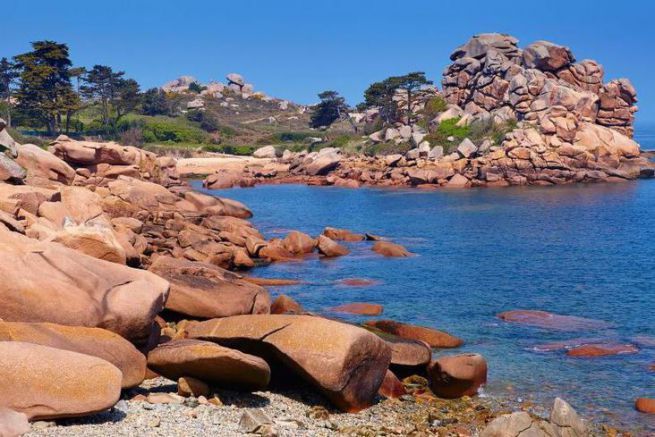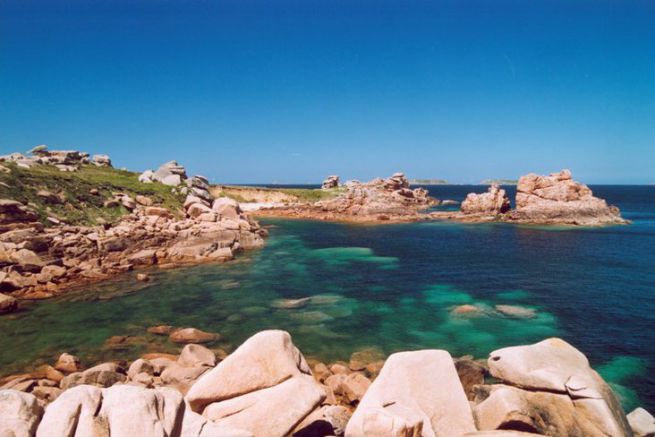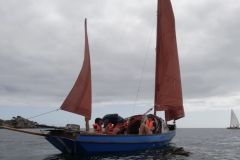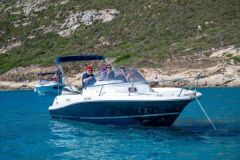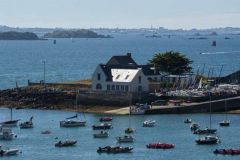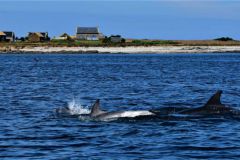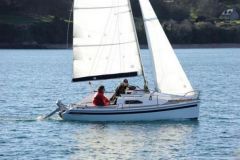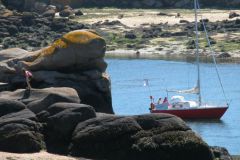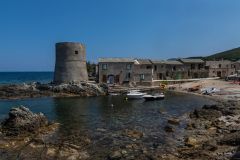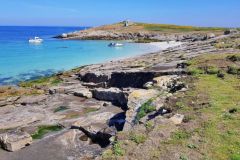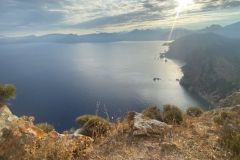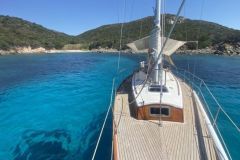Their color? Pink of course. A beautiful coppery pink that glows in the sun. It's magic, get on board! A few ideas for stopovers and anchorages, tested for you!
A short stroll from Trébeurden to Île Grande, the Seven Islands, Perros-Guirec and Ploumanac'h. Sink between majestic and pink rocks to reach dreamy anchorages. To be done taking into account distances and tides. In fast waters, the tidal range is close to 10 metres. The current is strong and not always as we would like it to be. We are on the north coast of Brittany. It's up to you! It's worth the detour.
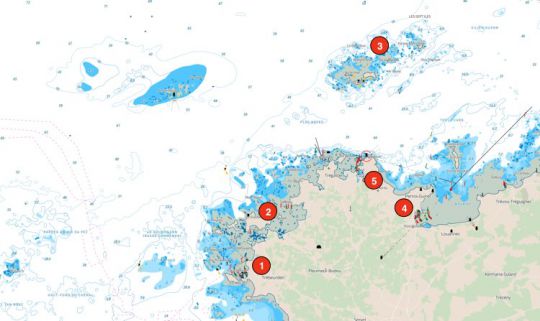
1. Trébeurden
Located at the entrance of the bay of Lannion and starting point of our escapade in the heart of the Pink Granite Coast, Trébeurden offers an exceptional first panorama. Its protected natural sites where luxuriant vegetation and granite bubbles are mixed together make it a particularly prized place. Its marina and numerous sheltered anchorages allow passing yachtsmen to find safe shelter in the middle of this magnificent coastline.
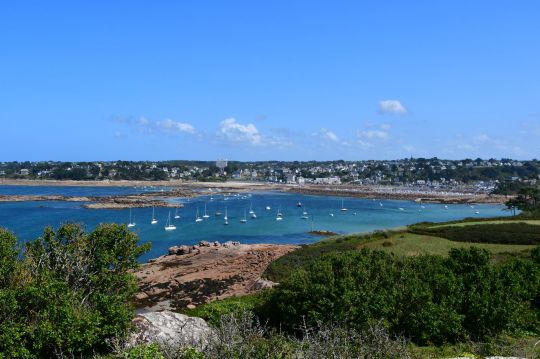
The marina is easily accessible via the well-marked channel of Toull ar Men Mellen by day and night. The wet dock is accessible for 6 to 8 hours a day depending on the tide. Schedules to consult on port-trebeurden.com
To see, to do:
Milliau Island
Accessible only at low tide, this island is also of great botanical interest since 270 plant species proliferate there, under the protection of the Conservatoire du Littoral, owner of the site.
In the Neolithic period, before the sea reached this place, man built a vast covered alley, which is still visible today.
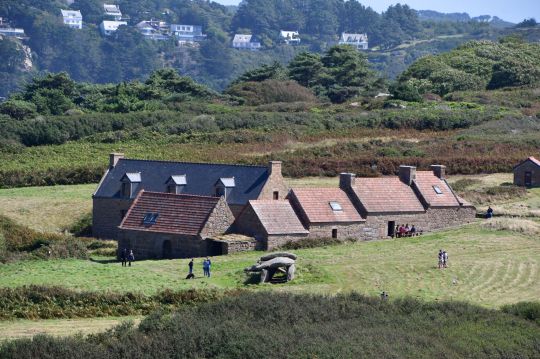
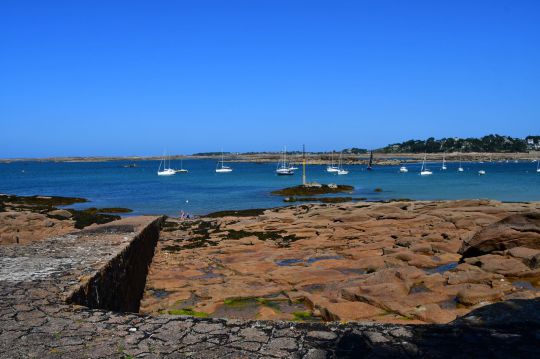
The Quellen Marshes
The Quellen is a true freshwater marsh with a diversity of natural habitats. Reedbeds, wet meadows, woodland and dune formations mark the identity of the place.
The marsh can only be visited on foot, along a small path dotted with wooden bridges overhanging the water by a few centimetres.
This site is home to "Camargue" horses and an observatory is available to ornithology enthusiasts.
Heritage
Numerous menhirs and covered walkways are scattered throughout the territory. On a stroll you will surely come across them.
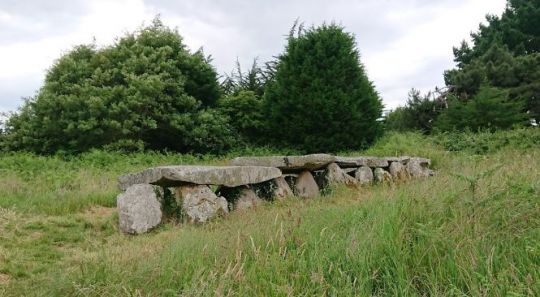
2. Grande Island
Île-Grande is connected to the mainland by a small bridge, thus attenuating the island side. As the tides go out, the landscape changes and makes the various islands around it accessible or not. Small roads and paths along the sea will make you discover in turn the pebble or fine sand beaches, the dunes of Toul Gwenn, the quarries, the crow's rock or the fountain of Saint-Sauveur.
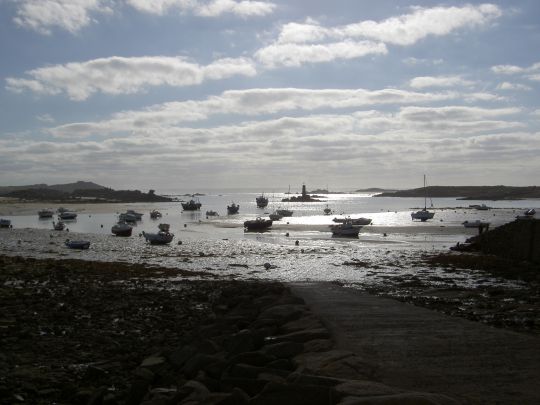
The port of Saint-Sauveur is a stranded port located in the SW of the island. Easy access and protected from the swell by Argenton Island. It is the port of the island's fishermen. Other anchorage areas are accessible all around the island. Don't hesitate to give free rein to your thirst for adventure. A 10ha beach around your boat for you alone ..
To see, to do:
Point of Castel Erek and Lion's quarries.
Blue and grey granites were extracted from this quarry between 1908 and 1979.
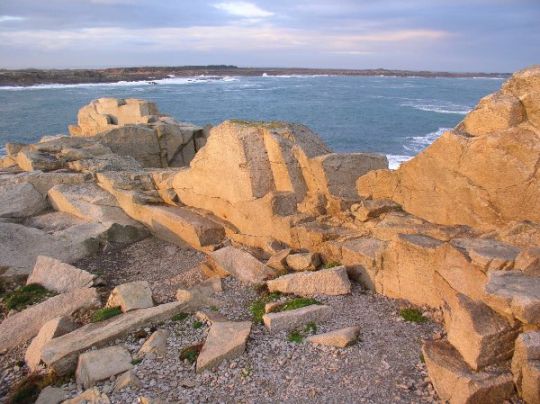

OPL Ornithological Station
The ornithological station of the island is specialized in the reception of marine birds. It is also a permanent exhibition centre on the biodiversity of the region. Finally, the station also manages the 7 islands nature reserve. The station organizes exhibitions, guided excursions to the Sept-Îles and nature outings: seabirds, flowers, coastal plants, low tide outings.

3. The Seven Islands
Off the Pink Granite Coast is the Sept-Iles Archipelago (Rouzic Island, Malban Island, Bono Island, Ile aux Moines, Plate Island, the Costans, the Deer), the undisputed kingdom of seabirds. This group of rocky islets is a protected natural site whose access is regulated.
Imagine thousands of birds, from gannets to puffins, crested cormorants, penguins, murres, northern fulmars and other sea gulls, silver and brown... in the hollow of the rocks.
On Rouzic Island, you can discover the only French colony of Northern Gannets with its 22,000 pairs. Let's not forget some grey seals that live permanently in this nature reserve.
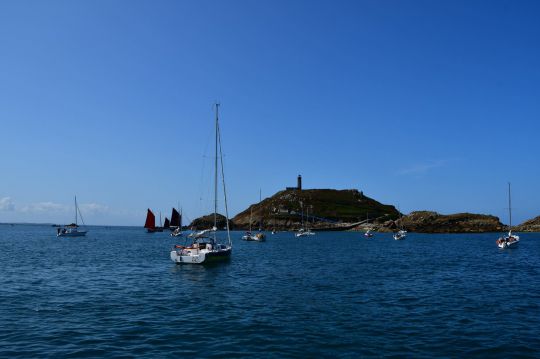
In calm weather the anchorage between Ile aux Moines and Bono Island is perfect for exploring the island. From the top of the island you can enjoy a fantastic panorama of the whole archipelago.
To see, to do:
Monks' Island
If the Cordelier monks who occupied it in the 14th-15th century have left only their name, the fort, built under Louis XV by a disciple of Vauban to put an end to the pirate smuggling trade, is still standing.
One can also land here for its 136 plant species, but also for the incessant singing of the seabird colonies and the observation of the seal basking quietly in the sun.
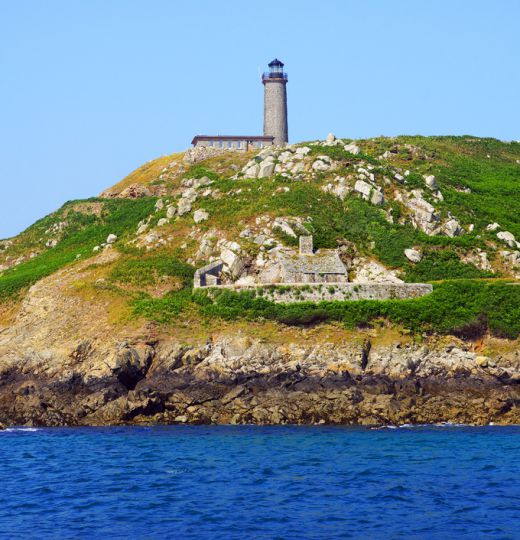
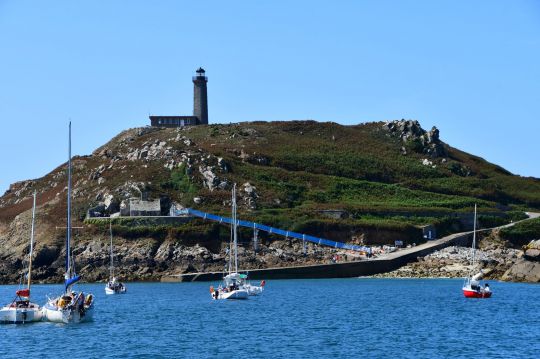
Rouzic Island
You can't land there, but it's impressive to sail along its southern coast to watch the seals and of course the thousands of Northern Gannets that nest there.
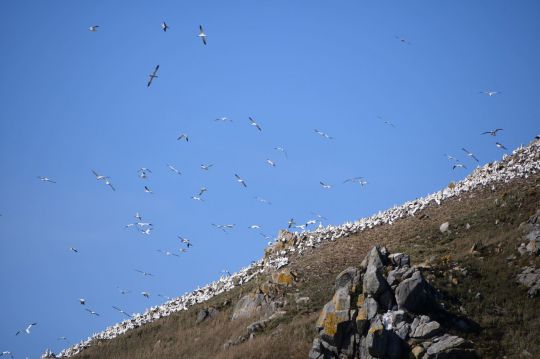
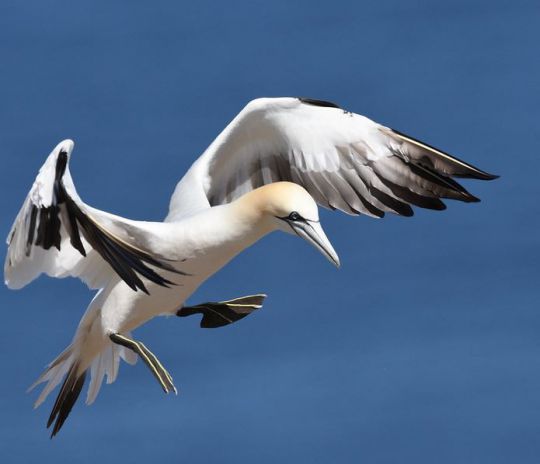
4. Perros-Guirec
Prestigious seaside resort for more than a century, Perros-Guirec is located in a protected natural site, in the middle of a landscape where the land and the sea are strewn with pink granite rocks with shapes carved by the wind. Thanks to its many fine sandy beaches, it attracts many families. Famous also for its hydrangeas, Perros even organised a festival of them.
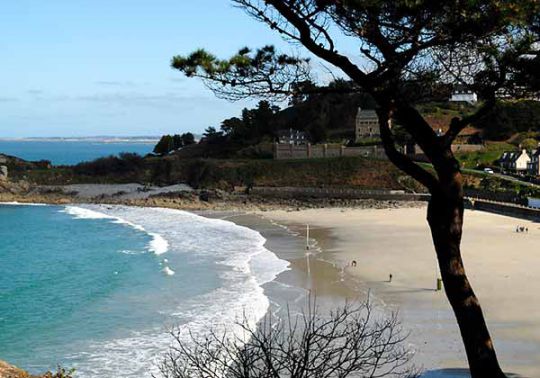
Perros-Guirec marina
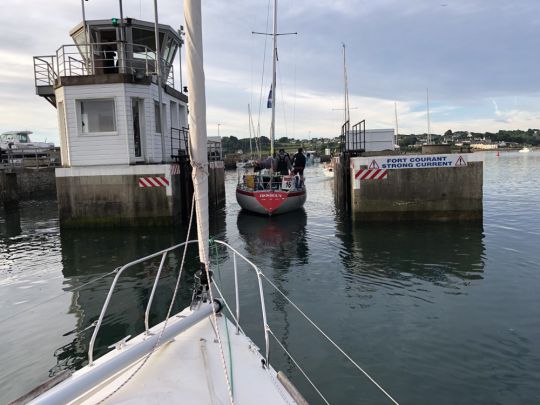
Modern port, but a little out of town. No particular problem other than limited access by the tides. Indeed a submersible retaining wall at shore +7 keeps the basin afloat and requires to pass through a door. So anticipate!
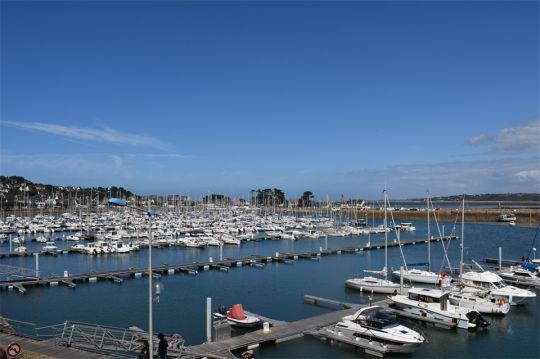
To see, to do:
The customs officers' trail
Better known today as GR 34, it was once used by customs officers to combat smuggling. You will discover the famous granite chaos as well as the natural wealth of the moors. All along the walk, sites of interest are also offered to you...
Notably the Saint-Guirec beach and its oratory, surrounded by chaos of pink granite, the turquoise colour of the sea is an invitation to swim.
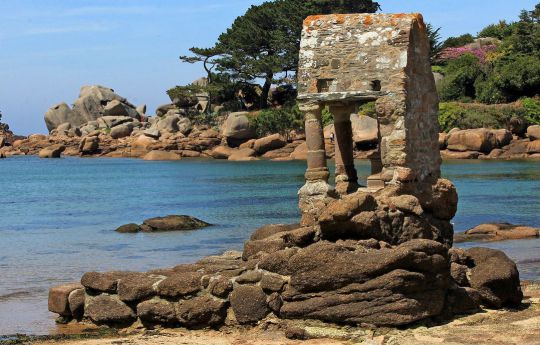
5. Ploumanac'h
Elected favourite village of the French a few years ago, Ploumanac'h has what it takes to seduce you, especially when you arrive by sea. Indeed, the very closed cove of Ploumanac'h is controlled by a narrow channel with more or less swell... The Mean Ruz lighthouse and the island of Costaeres frame the entrance pass. Then, one has the choice to either reach the port nestled in the heart of the town or to opt for a wilder anchorage area in the W of the n°5 pole.
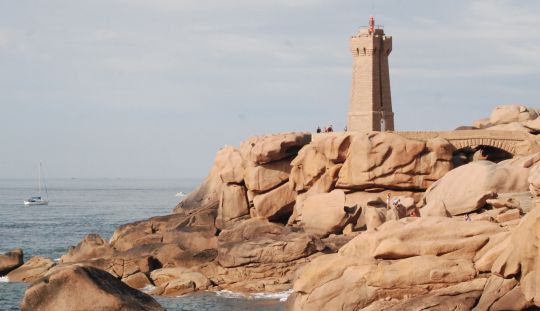
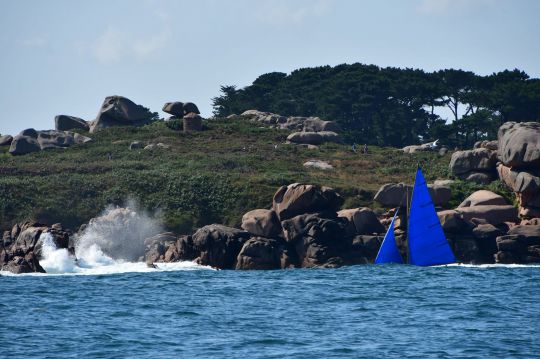
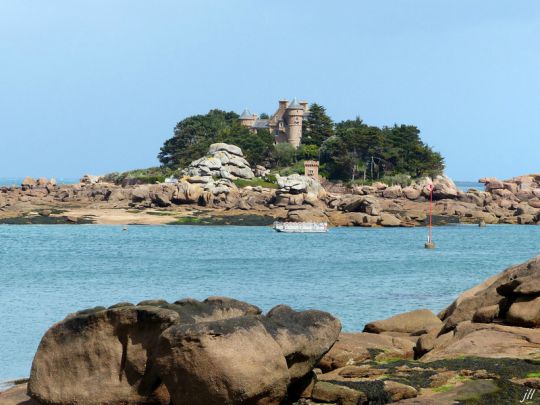
The port of Ploumanac'h
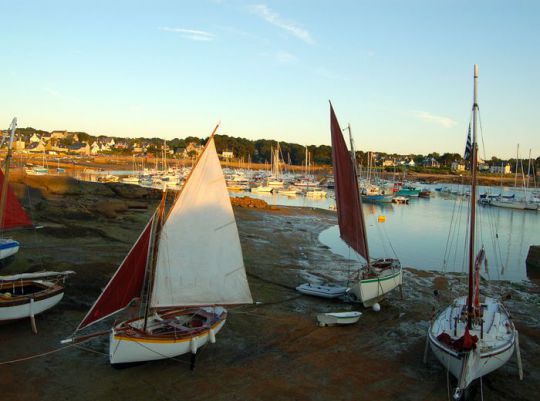
Floating port closed by a submersible wall at the coast + 2.50. Mooring on dumbbell buoys.
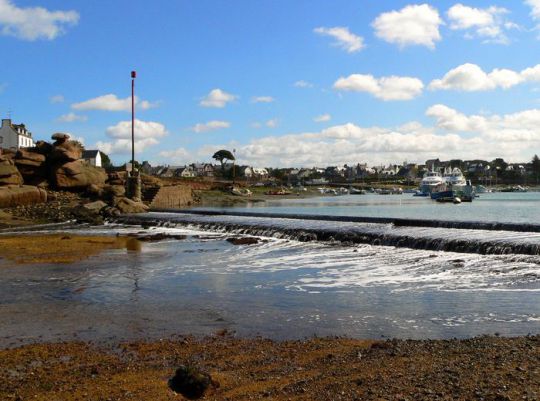
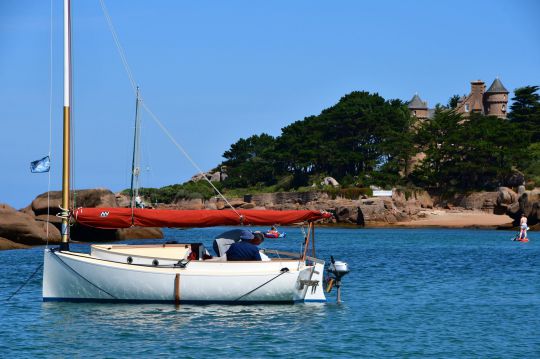
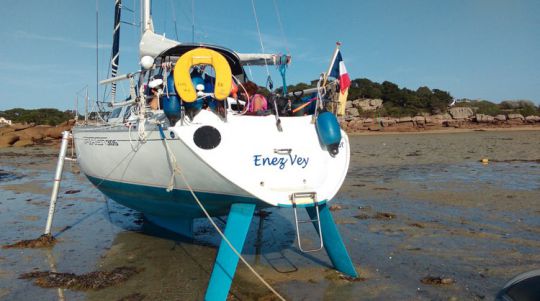
To see, to do:
The customs trail.
Already mentioned, but to continue as the walk is so beautiful..
The tide mill

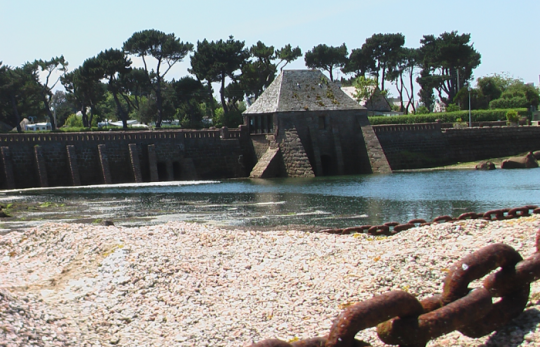
The mill is a watermill that was operated by the tides. How does it work? Water entered at rising tide through the sea gates (pipes built into the dyke to allow water to enter the basin, the "gates" opening only on one side). The water came out through the runners (other adjustable pipes to control the rotation speed of the millstones) and operated the mill's paddle wheels. The wheels released by the tide would rotate at mid-tide. The mill therefore began to operate three hours after the start of low tide and three hours after the start of high tide. This provided six hours of work twice a day.


